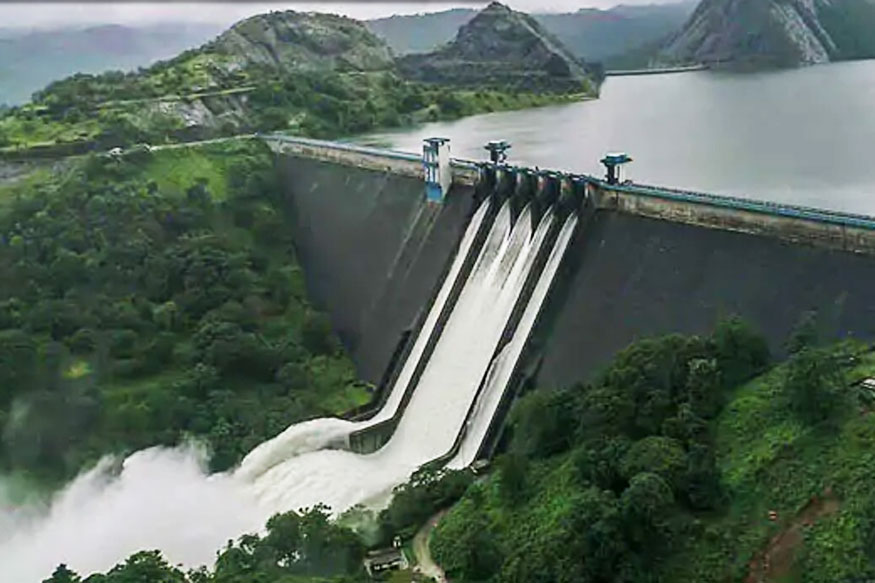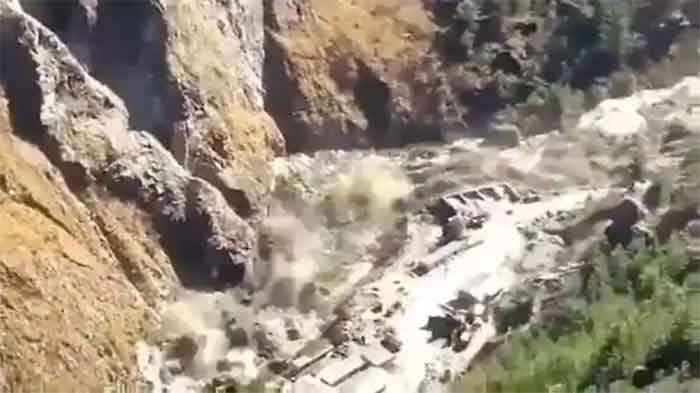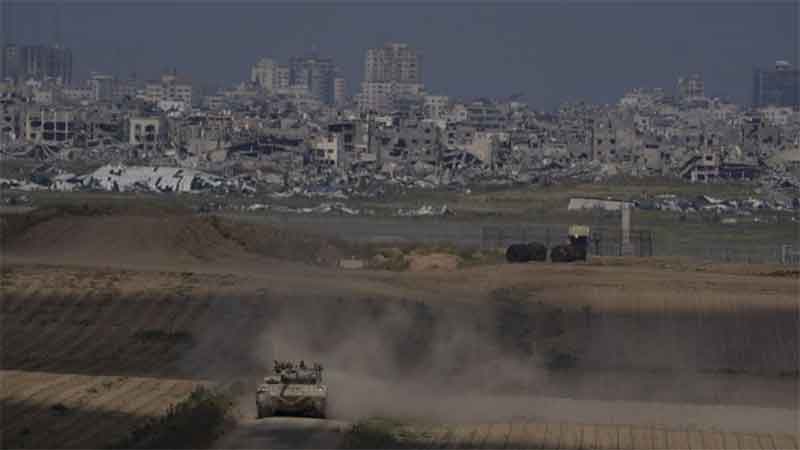
At a time when the safety of dams and legislation relating to this are being widely discussed in India it is important to assert that dam safety issues should not be confined just to any collapse or failure of structures. While this aspect is no doubt the most important, other significant aspects of big floods being unleashed by sudden discharge of immense quantities of dam water and reservoir induced seismicity also need to be included in the planning for improving dam safety.
During the post-independence period over 50 dams have collapsed in India. One of the biggest tragedies caused by dams in India, the Machu dam disaster of August 1979 killed several hundred people and destroyed Morvi town as well as several villages. According to the Consumer Education and Research Centre, Ahemdabad, Machu dam was designed on the basis of outdated empirical formula. Although in the course of the project study conducted before constructing this dam the Central Water and Power Commission had thrice asked the state government to check on a more scientific formula for the construction of the dam, the government went ahead with the construction of dam without having carried out this exercise. It was only at a very late stage when a major share of the dam had already been constructed that this exercise was conducted, and then somehow the findings were tailored to fit in with the almost already constructed dam.
In addition the following other cases of dam failure in India may be mentioned :-
Kaddam Dam – following heavy rainfall in the catchment, this composite dam failed in August, 1959. This failure was attributed to inadequate spillway capacity.
Chickahole dam (1972) – This mansonry structure failed in December 1972 due to tension caused at dam base on account of water level rising to top of the dam.
Dantwada (1973) – A breach occurred along the reservoir periphery in September 1973.
Aran (1978) – This case of earth dam failure has been described as a classic case of foundation failure generated by seepage.
Jaswant Sagar dam – This dam in Rajasthan breached in July 2007 despite the fact that it was supposed to be monitored under the World Bank funded ‘Dams Safety Assurance and Rehabilitation Project”.
Gararda – This dam in Rajasthan collapsed in August 2010. The enquiry committee report highlighted criminal negligence and corruption leading to substandard work.
Another fact which may be pointed out is that the rehabilitation of the victims of dam failure often leaves much to be desired. In 1961 the earthen dams at Panshet and Khadakwasala dam (Maharashtra), breached, bringing death and destruction to the villagers. About 200 lives were lost, and 14,000 families were rendered homeless. Despite the rehabilitation efforts made by the government the life of these victims remained uncertain for a long time.
Thus heavy damage and large scale distress has been caused by dam failures in the past and as most suitable sites have been exhausted and future dams are being built at more difficult sites, such as in the Himalayas, the need for caution can hardly be over-emphasized. An adequate system to assess hazards of projects before they are constructed and to monitor their safety after they start functioning is a must. Adequate financial provision for this should be made.
There have been some cases when we have come quite close to major dam distress. Fortunately these have been averted. But the near failure should be cause enough for a thorough review of the safety aspects. Such a review, it appears, is not made in such cases. According to statements made by senior officials themselves, the giant Bhakra dam has come close to failure twice at the time of torrential rainfall and heavy inflow of water. Similarly the Farakka project came under a cloud as in 1989 the irrigation Minister of W. Bengal himself sounded warnings about the threat to the safety of this structure.
It was due to lack of adequate consciousness about dam safety that some time back the Mullaperiyar dam issue was converted into an inter-state issue between Kerala and Tamil Nadu while it should have been treated first and foremost as a dam safety issue. The first step should have been to ensure the safety of people affected by a threatened dam.
The issue of dam safety has to be taken forward in a more open and transparent way with adequate space for independent experts and affected people to be heard properly.
A disturbing aspect of many flood situations in recent years has been that these were caused by sudden and heavy discharge of water from dams.
Some years back thousands of pilgrims bathing at a religious fair at Dharaji (near the town of Dewas in the state of Madhya Pradesh) were overwhelmed by a sudden surge of water. Almost 150 of them were carried away by the unexpected water waves. About 65 dead bodies were recovered. This water was released from the Indira Sagar dam project on Narmada river. Why was this additional water released when thousands of pilgrims had collected at a short distance for a sacred dip in the river?
It is clear from such disasters that the arrangements for proper regulation and release of water from dams need to be drastically improved.
The release of water from dams is broadly of two types – routine release such as the release of water to meet the peak demand of hydropower generation. Secondly there is the emergency release of water (which generally takes place at the time of heavy rains) which is made when the capacity to absorb any more water does not exist and water has to be released, sometimes in very massive quantities, to prevent the over topping and collapse of dam.
While the second type of water release generally causes flash floods, sometimes quite destructive ones, it is generally taken for granted that the routine discharge of water will not cause any destruction. So it was particularly disturbing to hear some officials say that the Dharaji tragedy was caused by routine release of water to meet the daily peak hydro power demand. Earlier also there have been some reports of pilgrims or picnic groups on several river-banks being overwhelmed by to such a rise in river level for which they were not prepared.
A question being asked is – to what extent can we prevent such tragic incidents by establishing a proper warning system and by avoiding discharge of water at the time of big religious gatherings? It has been pointed out that timely action by district officials to inform dam officials about such gatherings has helped to avoid such tragedies in the past. But shouldn’t dam officials also be more alert to obtain such information on their own? After all, at the local level the auspicious days (and nights) of such gatherings are well known.
The situation caused by emergency release of water from dam reservoirs can be even more serious. In recent decades water releases from dams of the Damodar river system, dams of Bhakra-Beas system, Hirakund dam and some dams in the tarai area have caused very destructive flash floods. Such floods are different from the gradual rise in river water seen in normal floods. This is like releasing a high wall of water suddenly. Clearly the destructive capacity of such floods is much higher than normal floods.
But officials point out that at times such discharge of water becomes unavoidable as the alternative will be over topping and collapse of dam which will be many times more destructive. However critics do not always accept this explanation. They ask why such a situation arises in the first place. One explanation they give is that due to the pressure to maximise hydropower as much as possible, enough attention is not given to flood-control aspects. Hence when the flood-flows come, there is not enough capacity in the dam reservoir to absorb it and an emergency situation is created.
This debate was perhaps most intensely seen at the time of the 1988 floods in Punjab when a very vast area of this state was submerged in the flood water released from Bhakra Dam. The dam management claimed that they had made a significant achievement by preventing the collapse of the giant Bhakra dam, but critics argued that earlier flood-control aspects had been ignored to maximise hydro power.
Such situations are more likely to arise at the fag end of the monsoon season when the expectation of more rain being quite low, the flood-control aspect is ignored and there is pressure to concentrate fully on maximizing hydro power to earn more money and meet power needs as well. But when late rains come then the destruction is so great that all earlier calculations are entirely upset. In this case most of the cost is borne by innocent farmers and other villagers.
So it is important to ensure that in the management of our dams, flood-control aspects get adequate attention and the routine discharge of water is also done in a cautious and careful way with a good warning system.
Last but not the least there is the issue of reservoir induced seismicity. Geologists and seismologists have debated for long the link between the impoundment of water in reservoirs created by dams and earthquakes. The generally accepted view is that in certain conditions these artificially created lakes can cause quakes of relatively smaller magnitude. This is called the phenomenon of reservoir induced seismicity or RIS.
However more recent studies based on a 7.9 intensity quake near Zipingpu dam in China have revealed the possibility of RIS related quakes of higher intensity as well. Above all, it is the recent experiences of the giant Three Gorges dam Project in China which have focused attention on how serious the threat of RIS can become. A study by the seismologists at the China Earthquake Administration revealed that monitors around the reservoir and in Hubei province registered 3429 earthquakes between June 2003 and December 31 2009. According to Patricia Adams of Probe International, “This represent a 30% increase in frequency over the pre-dam period.”
In India the possibility of these hazards was recognised following the devastating earthquake which struck Koynanagar (Maharashtra) on December 10, 1967. This region had earlier been a stable non-seismic one, but experienced a series of tremors after the impounding of the Koyana reservoir in 1962. In this earthquake nearly 200 lives were lost, 1500 people were injured and thousands were rendered homeless and more than 80 per cent of the houses in Koyananagar were either completely destroyed or became uninhabitable. Bombay and its suburbs were also rocked, industry was paralysed and generation of electricity was disturbed.
The controversy of dams-induced quakes received a new impetus following a series of tremors in Khardi village (North Konkan area of Maharashtra), just eight kilometers away from Bhatsa Dam. After the Koyna earthquake of 1967 and its preceding and succeeding tremors, Khardi was the first major instance in India of seismic activity in a region which had long been regarded as a non-seismic zone. The sequence of events seems to suggest that there was a strong connection between the rising water level in the Bhatsa lake and the tremors at Khardi.
According to Prof. V. M. Dehai Kulkarni, then head of the department of Geology at the K.J. Somaiva College of Science in Bombay, the continual development of new water supply systems by constructing retaining dams across rivers causes irrepairable damage to the eco-system. The erection of large retaining dams across the Tans, Vaitarna and Bhatsa rivers during the last 95 years changed the natural water regime of the area. When man tried to control this drainage and started to replace the natural components by artificial ones (like dam structures) without respecting nature’s laws the sensitive ecosystem of Khardi, which is susceptible to disturbance, began to react.
According to another scientist Dr. S. K. Guha, from a review of case histories of induced seismicity in the world, it has been observed that significant seismic activity follows large fluctuations in lake levels. Larger earthquakes in the Koyna region have occurred in the post monsoon months of October to December. In Khardi, the activity showed an enhancement following large changes in the level of the Bhatsa during the month of July.
One view emerging from research on reservoir induced seismicity is that the massive weight exerted by the impounded water on land hitherto unused to anything like this sets in motion a series of geological changes which may culminate in destructive earthquake. Another contributing factor may be the existence of active faults.
To return to the experience of China, available studies indicate that RIS tremors in Three Gorges areas triggered so many landslides that nearly 300000 people had to be evacuated. Even though so far the RIS quakes of this area have been of lower intensity, a senior engineer of Sichuan Geology and Minerals Bureau has warned that “strong earthquakes could occur in the future as the reservoir fills because the micro-fractures, caused by the large number of micro-earthquakes, could make the area dangerously prone to a strong earthquake.”
All this recent evidence points to the need to give more attention to the possibilities of reservoir induces seismicity.
Hence all these aspects of possibility of dam-failure, flash floods unleashed by sudden discharge of excessive dam water should be considered together and reservoir induced seismicity should be included in a more comprehensive understanding of dam safety so that our dam safety laws and efforts can consider all these inter-related aspects of dam safety together. In addition climate change related factors and the possibilities of worsening disasters and extreme weather events should ge adequate attention.
Bharat Dogra is a journalist and author. His recent books include Planet in Peril and Protecting Earth for Children.
GET COUNTERCURRENTS DAILY NEWSLETTER STRAIGHT TO YOUR INBOX















































